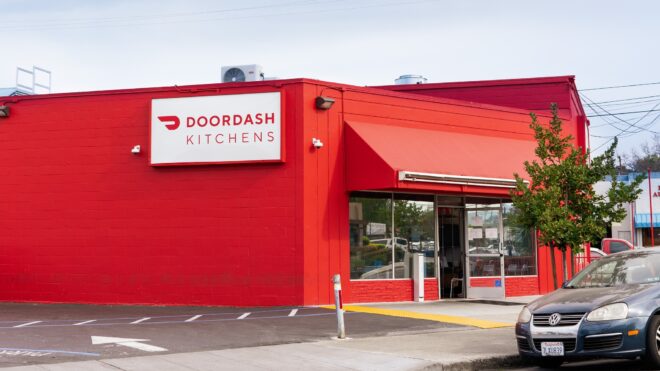If someone asks you, "Where does your food come from?" you'd probably say a farm.
Although this word conjures up images of a guy in overalls and a big red barn — such as this one that's home to a stunning piece of 1800s art — some of today's farms actually look and operate much differently.
Humans were originally hunter-gatherers, and it wasn't until about 10,000 years ago that we started keeping and breeding animals for food and clothing.
If you could take a time machine back to that era, you'd see that cows, pigs, and even poultry looked much different from the animals we're familiar with today.
Genetic modification, via intensive breeding and other means, has transformed domestic animals into "superbreeds" that are specifically designed to grow faster and yield more meat.
It's hard to see the drastic way that human interaction has altered farm animals until you see them compared with the wild versions that are still around today.
Scroll through below to see some side-by-side comparisons of animals before and after human development. The differences just might shock you!
Wild Boars vs. Domestic Pigs
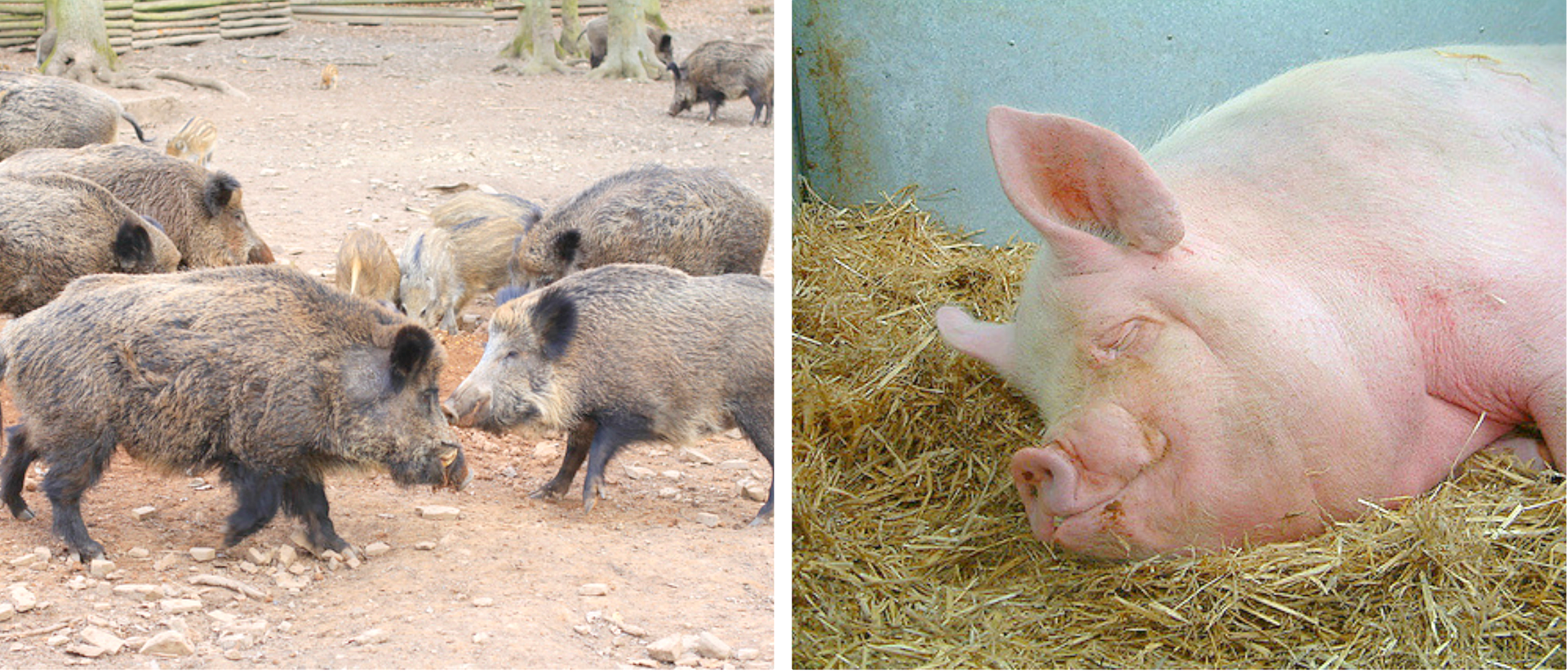
Modern-day pigs were domesticated from the wild boar found in parts of Asia and Europe.
Boar were dark brown, furry, and brandished sharp tusks. Even in the early days of domestication, they were still allowed to roam free in the woods, foraging for food.
Today's domestic pigs have lost their fur and tusks, and are raised in intensive pig farms where they have little to no room to move around.
Wild Sheep vs. Domestic Sheep

Sheep were among the first animals to be domesticated by humans.
Wild sheep used to be dark in color, with ears that stood somewhat erect and large horns used for protection.
As we tamed sheep and began breeding them for food and textiles, sheep lost many of these characteristics.
Today's sheep are bred to be large, with delicate bone structures and no horns. They have high-quality fleece, large foreheads, and unfortunately for the sheep, smaller brains.
Wild Poultry vs. Domestic Chickens
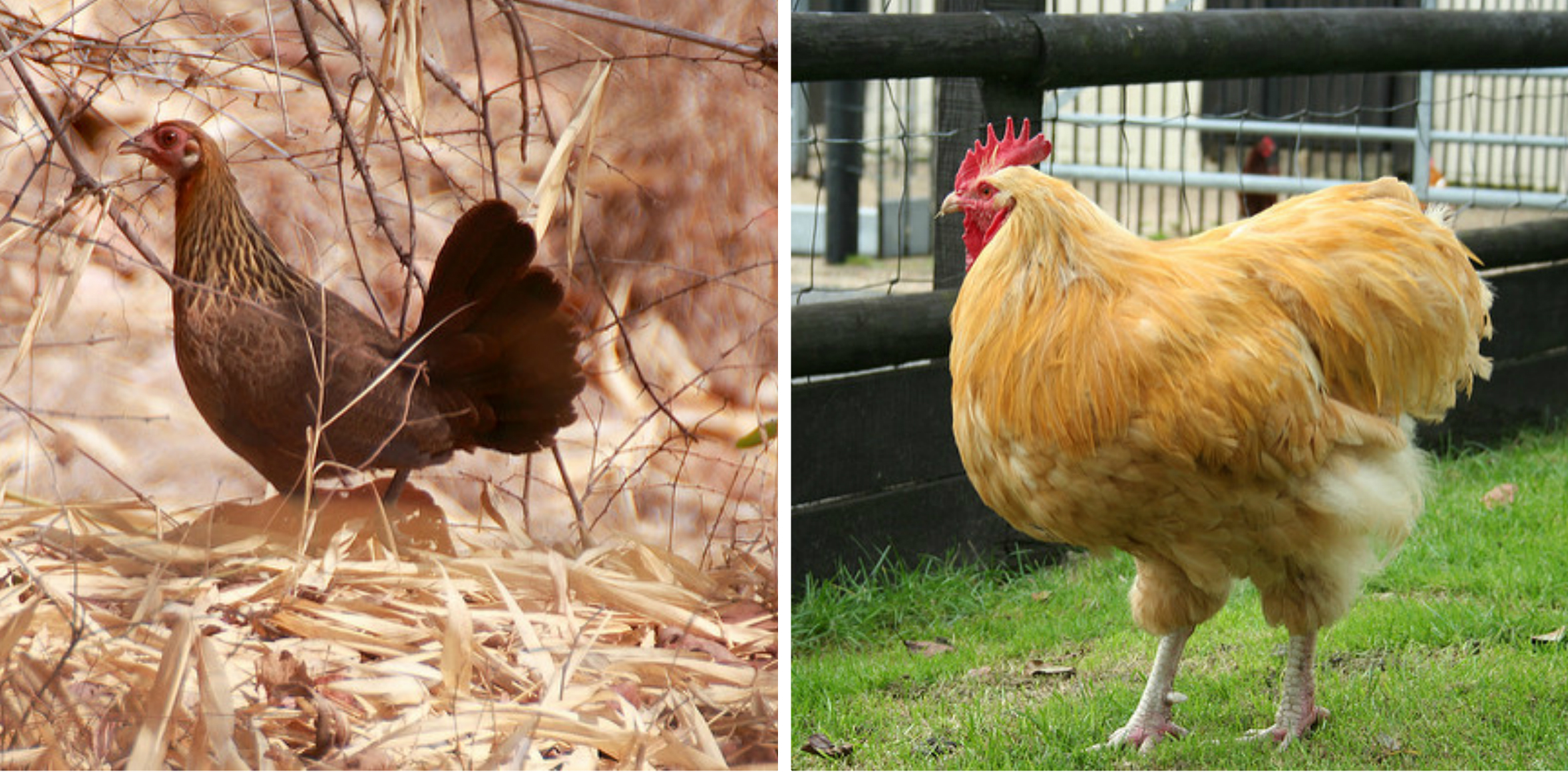
The chicken is another animal that has undergone a dramatic transformation ever since humans domesticated them.
Selective breeding and the introduction of genetically modified grain feed mean a modern meat chicken weighs nearly 10 pounds — almost five times the size of a wild chicken — and their breasts are 80 percent larger.
Also shocking is that they reach this size in six weeks, whereas it used to take a domestic bird up to 15 weeks to reach its fully grown (but much smaller) size.
Not surprisingly, this accelerated growth often leads to health problems and suffering for the animals.
Wild Cattle vs. Domestic Cows
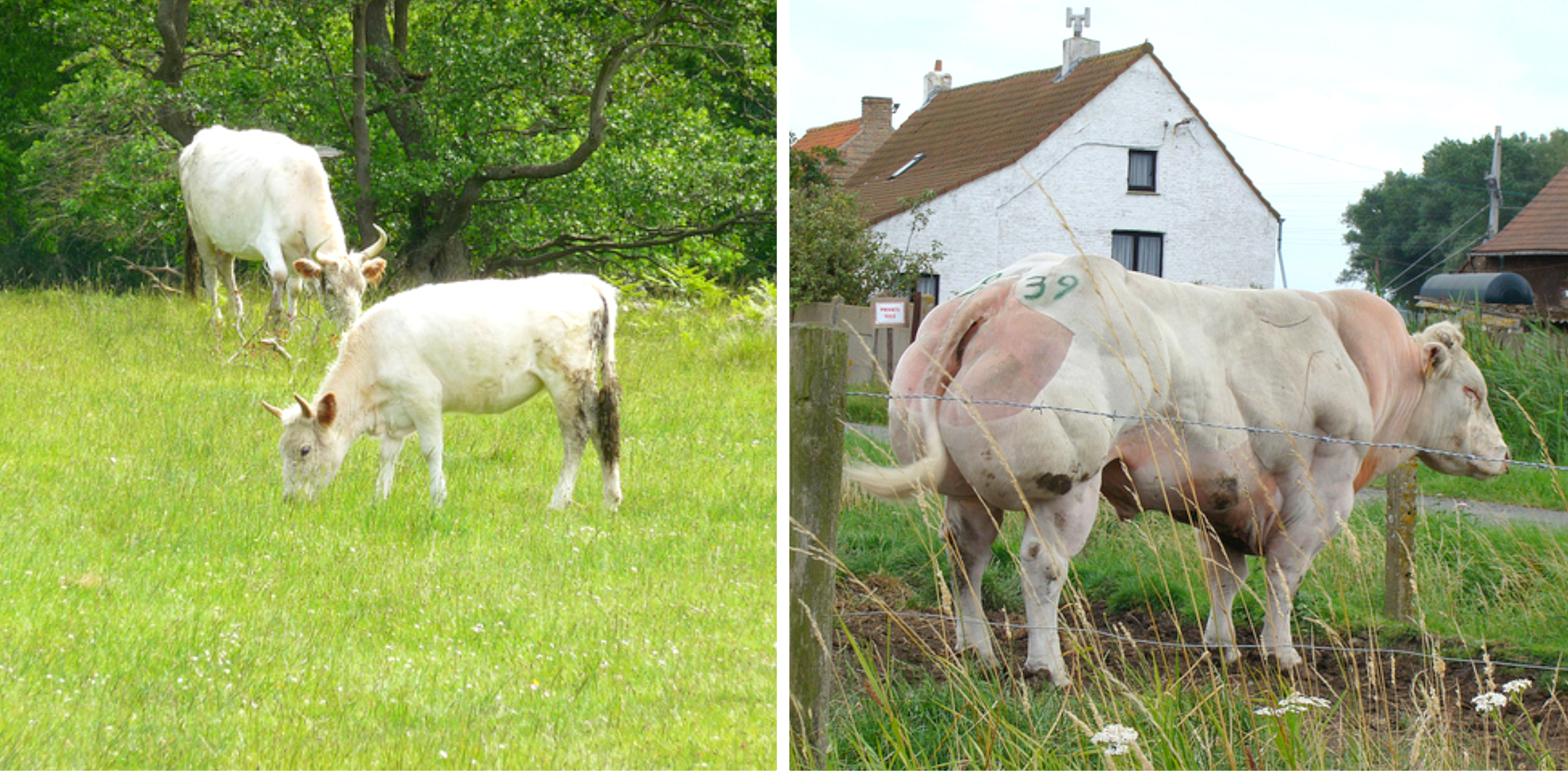
Cattle were first domesticated in the early Neolithic Period.
The breeding of cattle is traced back to the 18th century and credited to Robert Bakewell, who is said to have raised the wild cattle of Chillingham (pictured above, left).
Ever since then, humans have been looking for ways to produce cattle of a greater size and larger meat capacity.
As you can see from the Belgian Blue cow pictured on the right, tweaking cattle DNA to produce mutations means more meat.
But the question remains: Is it good for the animal? And what are the effects of humans eating "mutated" meat?
Wild Salmon vs. Genetically Altered Farmed Salmon
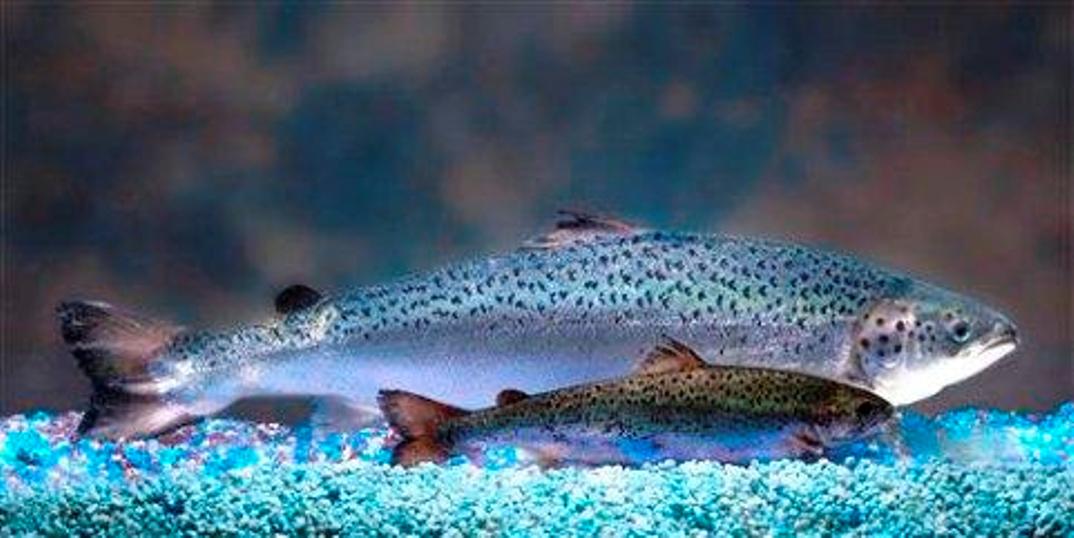
Humans have long depended on wild fish, such as the salmon, for sustenance.
Demand has been so great, that by the early 1800s, Atlantic salmon numbers had already declined so much that fish hatcheries were built in an effort to bolster populations.
No longer content to only farm salmon, companies have figured out a way to alter its genes so that it grows twice as fast as a normal fish.
The image above shows a wild salmon (in front) and a farmed salmon (in the back), both at the age of 18 months.
The larger salmon was made by combining genes from a wild Chinook salmon, a farmed Atlantic salmon, and a third eel-like fish called an ocean pout.
Concerns about the safety of consuming the resulting "mystery fish" have caused a delay in its public release, and wildlife experts say that if one of the altered salmon somehow escaped into the wild, it could mean the end of wild salmon altogether.
Genetic Modification
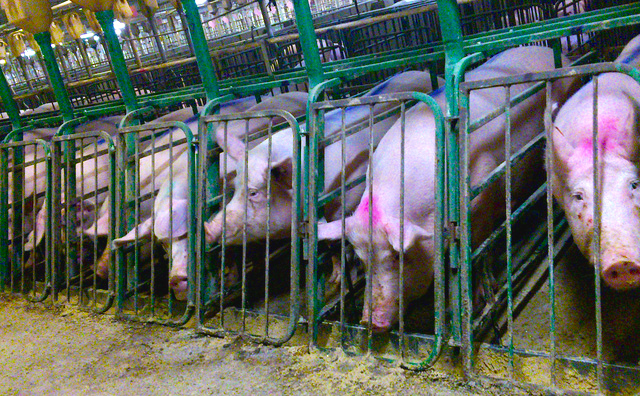
Although it has only recently become a buzzword, genetic modification has technically been happening ever since humans started keeping and breeding animals.
However, there is obviously a large difference between breeding together two strong cows, and splicing the genes of an eel into a wild salmon.
While one method simply assists natural selection, the other mixes the DNA of animals that would have never mated naturally in the hopes that it will produce an artificially advanced version.
The Need For Care
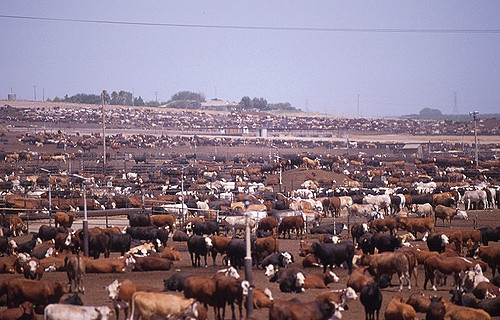
We must be careful to be sure that agricultural "advancements" are safe — for humans, the environment, and the animals who must endure them — before declaring them as a solution that will feed the world.
Were you surprised to see how much livestock has changed since human domestication? How do you feel about genetic modification? Tell us in the comments.
Please SHARE this controversial and fascinating look at our food with friends and family!


